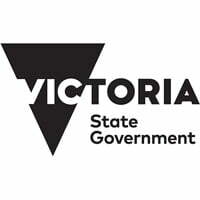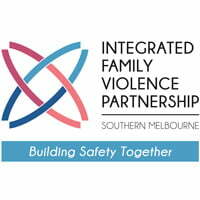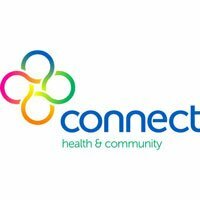Preventing Gendered Violence Workshops
The prevention of violence against women (PVAW) is about stopping violence before it starts. The evidence is very clear that violence against women, including coercive control is driven by gender inequality and worsened by other forms of discrimination and systemic power inequity.
Violence against women is one of the most widespread violations of human rights in the State of Victoria. The good news is that if we all work together, violence against women is absolutely preventable.
Summary: This session helps attendees to increase the understanding of gender equity and how it would contribute to the prevention of gendered violence.
We deliver this session to build attendees’ capacity of recognising the outdated gender stereotypes and its impacts on everyone and understanding the differences between gender equality, equity and justice. Through interactive practices, attendees would be able to draw the connection between gender inequality and gender-based violence and embed a gender lens in their daily lives.
Program Modules
- What are gender stereotypes and their impacts?
- The differences between inequality, equality, equity and justice.
- The link between gender inequality and its contribution to gender-based violence.
- Understanding our role in embedding gender transformative approaches in the community, workplace and other spheres of influence.
| Size | up to 25 |
| Format | Face-to-face or online |
| For | Community members and professionals |
| Duration | 2.5 hours |
Summary:This session is provided to help attendees understand what gender-based violence is, what impact it has on people, what the drivers of violence are and how every can take actions to stop it from the start. Attendees will also be able to explore the linkages between gender inequality and its contribution to gender-based violence.
Modules
- What is family violence?
- What causes family violence (and other forms of violence)?
- The link between inequality and violence and what we can do.
- Understanding our role.
| Size | up to 25 |
| Format | Face-to-face or online |
| For | Health Professionals |
| Duration | 2.5 hours |
Summary:The session is designed to increase attendees’ knowledge of recognising gender stereotypes an unconscious bias and the impacts they have on our decision to be an active upstander. The session also equips attendees with skills in how to be active upstander, and how to take everyday actions to contribute to a safe and respectful community.
Modules
- The link between gender inequality and prevention of gender-based violence
- Unconscious bias and the impact it can have on our decision to take action.
- Barriers and enablers to take action.
- Different methods of taking action.
- Practical application of everyday action to create safe, equal and respectful communities.
- An understanding of reproductive coercion within the framework of gender-based violence
- The physical and mental health impacts of reproductive coercion
- Current screening tools to enable practitioners to identify reproductive coercion
- Existing referral pathways and support options for victim-survivors of reproductive coercion
| Size | Up to 25 |
| Format | In-person, online |
| For | Community members and professionals |
| Duration | 2.5 hours |
Summary: The session aims to support attendees in understanding resistance and backlash in relation to prevention of gender-based violence, and how to effectively manage them in different settings. Trainers will take attendees through scenarios activities to identify resistance and backlash in workplaces and in the community as well as practical strategies to counter resistance and backlash to ensure the best possible outcomes when they happen.
Modules
- Resistance and backlash.
- What are the different types of resistance and backlash.
- How each type of resistance and backlash can be planned for and countered.
- Understanding our role in our relationships, workplaces and community.
| Size | up to 25 |
| Format | In-person, online |
| For | Community members, workplaces and others. |
| Duration | 2.5 hours |
Summary: This session is to increase attendees’ understanding of what a disclosure of family violence looks like and how to respond and refer appropriately and sensitively.
Disclosure and referrals of family violence can occur in many different contexts, and it is important that people are able to identify and respond in an appropriate and effective manner. This session will walk attendees through the signs of family violence and what a disclosure may look like in practice. It will also help attendees confidently and appropriately respond to direct and indirect disclosures and support perpetrators and victim survivors.
Modules
- Recognise the signs of family violence and what a disclosure might look like.
- Respond appropriately to either a direct or indirect disclosure and how to support someone.
- Refer to the appropriate specialist support services and make sure that there is support and follow-up.
| Size | up to 25 |
| Format | In-person, online |
| For | Community members, professionals and others. |
| Duration | 2.5 hours |
Summary: Learn how to manage your own emotions and stress levels when you’re working in prevention of gender-based violence programs or supporting a friend, colleague or family member experiencing family violence.
Working in primary prevention and community sectors is emotionally draining work. Caring for people experiencing family violence can be stressful and emotionally taxing. To continue to provide the necessary support and care we must ensure you stay healthy both physically and psychologically. This looks different for each person; we will explore what works best for you and how you can integrate activities that fill your cup into your routine.
Modules
- Explore what self-care is and why it is important for all of us.
- Explore the concept of radical self-care from the perspective of gender equality and prevention of family violence.
- Understand two key models:
- Circle of Concern/Circle of influence and
- The Seven pillars of self-care.
- Reflect on and plan for how we currently practice self-care and, how we can strengthen this.
- Have a practice at some basic activities and reflect on current practices.
| Size | 10 - 25 people |
| Format | In-person, online |
| For | Anyone working in primary prevention, early childhood education, teaching, family violence, charity, not-for-profit or involved in long-term, progressive change processes. |
| Duration | 3 hours |
Summary: This training will give attendees a better understanding of how gender and disaster interact including why men’s violence against women increases after disasters, the impact of disasters on men’s mental health, and how to address these issues.
Lessons in Disaster training is critical for people at all levels within the emergency and broader recovery sectors. This includes state and territory emergency services; fire, ambulance, and police; other government services; community sector organisations; local councils, communities, and faith-based providers.
WHISE are able to bring their expertise in prevention of gender-based violence and apply it to the emergency planning, disaster and recovery sector in communities that are increasingly experiencing disasters.
Lessons in Disaster core sessions include:
Session 1: Gender and Emergency – The Evidence.
- International and Australian research on the links between disaster and family violence
- GADAus research on women’s and men’s experiences during and following Black Saturday
- The barriers women face in reporting family violence or the risk of family violence during and following disasters.
- The barriers to men expressing emotion.
- The development of research-driven, gender-sensitive emergency policy and procedures.
Session 2: The gendered drivers of family violence
- Increased pressures to conform to rigid, binary gender stereotypes for men and women are under, during and following disaster.
- The impacts of this increased pressure on men, women, LGBTIQA+ people and other minority populations
- The drivers of family violence according to Our Watch
- Why family violence increases during and following disasters.
Session 3: Disaster, gender and diversity.
- Sex, gender, and sexuality.
- The social construction of sex, gender and sexuality and the relationship between all three.
- The negative impacts of celebrating ‘heroic masculinity’ on women, men and LGBTIQA+ people
- The role sexuality plays in the construction of polarised gender stereotypes.
Session 4: Working towards change.
- Review Sessions 1, 2 and 3
- Consider ways of incorporating the impacts of disaster on family violence in attendee’s role and workplace.
- Apply learnings to attendee’s organisation’s policies, protocols, and services.
| Size | 10 - 50 people |
| Format | In-person, online |
| For | Staff and volunteers from emergency and recovery sectors such as state and territory emergency services; fire, ambulance, and police; other government services; community sector organisations; local councils, communities, and faith-based organisations who respond to disaster situations. |
| Duration | Option 1: 1 full day – face to face 9.30am – 4.30pm Option 2: 2 ½ days – face to face 9.00am – 1.00pm Option 2: 2 ½ days – online 9.00am – 1.00pm |
Summary: This program is designed to empower members of our local community to play a role in preventing and responding appropriately to family violence.
First Aid means to empower non-specialist members of the community to intervene to support the health and wellbeing of people experiencing a crisis. Therefore, Family Violence First Aid aims to build people’s understanding and capacity to take action, not only to recognise the signs of family violence but also to skilfully respond and refer to specialists. This also enables people to identify ways in which we can create more respectful, gender equitable and safe communities so that violence doesn’t occur in the first place.
This program is held over 6 short modules, over 6 weeks, with 3-hour sessions.
Attendees will build their understanding about the prevalence of family violence, what drives family violence in our community and how to create more respectful, equal and safe communities. Attendees will also build their confidence to take action to prevent disrespect, discrimination and inequality. By the end of the course attendees will be more confident to recognise, respond and refer disclosures of family violence from friends, family and colleagues as well as to take care of themselves in the process.
Modules
- Fundamentals of Gender Equality
- What is Family Violence and why does it happen.
- Active Bystander (Upstander) in community and at work
- Responding well to Resistance and Backlash
- Managing Disclosures and making referrals
- Practicing self-care
| Size | 10 - 20 people |
| Format | In-person, online or hybrid |
| For | Community members (committee members for school, kindergartens, childcare, playgroups, youth services, sports clubs, neighbourhood centres, faith-based settings) |
| Duration | 3 hours/week for 6 weeks |
Join our mailing list
Stay in the loop of what's
happening at WHISE




























